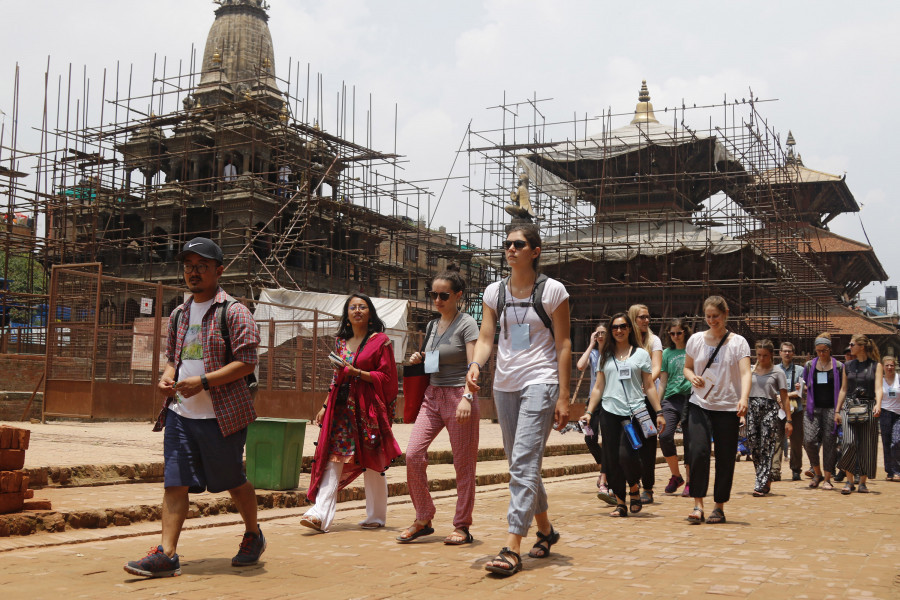Editorial
Where are they?
Only 550,000 tourists came to Nepal last fiscal year, which is 50 percent of pre-Covid level.
With the arrival of spring—the season of trekking and mountaineering—hoteliers in Nepal hope for a healthy influx of tourists. They may be disappointed though. Hotel owners lament the paucity of room reservations. As per the Hostel Association Nepal, which has 2,000 member hotels across the country, one-fourth of all rooms are vacant. Data show Nepal’s tourism sector is slowly recovering, and tourists are coming back after a long Covid-induced hiatus. However, only 550,000 tourists came to Nepal last fiscal year, which is 50 percent of pre-Covid level. But why are more tourists not coming then?
There could be a number of reasons: political instability, massive corruption, frequent plane crashes, and sloppy and inadequate promotion of tourist places. Hoteliers complain that despite the construction of the Gautam Buddha International Airport, only one international flight operates there. Similarly, 80 percent of the hotel rooms in Pokhara faced cancellations following the January 15 Yeti airline crash. Also, after the introduction of the recent one-guide rule, room as well as flight bookings for the October-November season have drastically dropped. This year, unsafe and unpredictable air services have been big deterrents for tourists; as is the new one-guide rule.
Hotels face even more challenges. They are having to service loans with interest rates of as high as 16 percent. After the announcement of two new international airports (Pokhara and Gautam Buddha), many new hotels were built near them in the expectation of a big tourist influx. People invested by taking out big loans from banks. The number of four-star hotels, only three in 2017, reached nearly 20; many more are under construction. Investors are already regretting their decision.
Programmes like the Visit Nepal 1998 and the Nepal Tourism Year 2011 proved fruitful for tourist inflow. Visit Nepal 2020, however, couldn’t yield positive results as it was hit by the pandemic and sloppy promotion. It is now essential for Nepal to think of a way to boost tourism through promotional activities, discuss international flights’ operation at new airports, and improve public-private coordination to build more infrastructure and road connectivity. The country hasn’t been able to promote unexplored areas as tourist destinations, focusing instead only on the places already in the old tourism portfolio. Nepal should learn from Thailand’s highly-value planned tourism. Recently, the Tourism Authority of Thailand launched the “digital tourism” initiative for the post-pandemic recovery of Thai tourism. The country has also succeeded in maintaining safety and hygiene standards with well-developed tourism facilities and convenient travel.
We don’t think the government of Nepal has been able to establish the country as a complete and developed tourism market. Governments and ministers come and go. They all have the vision to build big airports but not how to optimise their use. New and innovative ways must be explored to boost new life into tourism. As hoteliers have already suffered a lot from Covid-19, the government should consider relief policies and packages for them. Poorly thought out policies like the one-guide rule for solo trekkers must be reconsidered and immediate measures taken to make Nepali skies safer (for instance by dividing the regulatory and profit-making roles of the Civil Aviation Authority of Nepal). The sooner these things happen the better for the country’s ailing tourism industry.




 10.12°C Kathmandu
10.12°C Kathmandu














